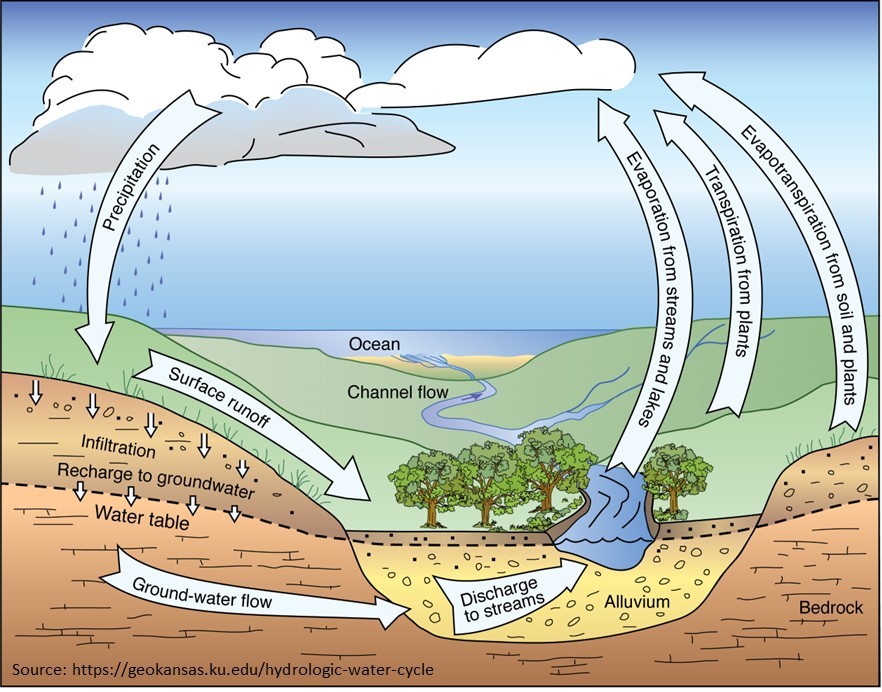Hydrologic Cycle.
The hydrologic cycle, also known as the water cycle, is a fundamental natural process that plays a pivotal role in sustaining life on Earth. It involves the continuous movement of water between the Earth's surface, the atmosphere, and underground reservoirs. While we often think of rivers, lakes, and oceans as the primary players in this cycle, there is another crucial contributor that often goes unnoticed – sap flow in plants.

Understanding Sap Flow
Understanding Sap Flow.
Sap flow refers to the movement of water and nutrients within a plant's vascular system, primarily through the xylem and phloem. This process is critical for a plant's growth, nutrient distribution, and overall well-being.
Plant sap is synonymous with maple syrup, rubber latex, or other substances exuded from plants. However, in the context of the hydrologic cycle, sap flow refers to the movement of water in the xylem.
Plants absorb water from the soil through their roots and transport it upwards through the xylem to the leaves. The movement of fluid within the xylem is called sap flow. The movement is called sap flow, rather than water flow, because the fluid has many constituents aside from pure water.
This upward movement of water is known as transpiration when water leaves the plant, typically via the leaves, as vapour.
Importance of Sap Flow in the Hydrologic Cycle.
Transpiration: Transpiration, driven by sap flow, is a significant component of the hydrologic cycle. It is essentially the process by which plants release water vapour into the atmosphere through tiny openings called stomata on their leaves. This water vapour ultimately condenses to form clouds, which play a crucial role in the formation of precipitation. Thus, transpiration contributes to the replenishment of atmospheric moisture, which later falls as rain or snow.

Implexx Sap Flow Sensor
On a global scale, transpiration (sap flow) contributes approximately 10% to the hydrologic cycle (with evaporation from the oceans the main contribution). On a local or ecosystem scale, transpiration can account for up to 75% of the hydrologic cycle in rainforests and 50% in deserts. This transpiration starts as sap flow within plants. Therefore, understanding sap flow is crucial to understanding transpiration’s contribution to the hydrologic cycle.
Regulation of Atmospheric Moisture: Sap flow helps regulate atmospheric moisture content. When plants actively transpire, they increase humidity in their immediate surroundings. This localised increase in humidity can influence weather patterns and even contribute to the formation of precipitation. In regions with dense vegetation, such as forests, this effect can be particularly pronounced.
Maintenance of Groundwater Levels: Sap flow also contributes to maintaining groundwater levels. When plants take up water from the soil and release it into the atmosphere through transpiration, they help prevent the over-accumulation of water in the soil. This, in turn, reduces the risk of flooding during heavy rainfall events and ensures a more consistent supply of water to underground aquifers.
Biodiversity and Ecosystem Health: The availability of water, driven in part by sap flow, is essential for supporting diverse ecosystems. Different plant species and their associated habitats depend on the availability of water. In turn, these ecosystems provide essential services such as water purification, habitat for wildlife, and recreational opportunities for humans.
Sap flow in plants is a critical but often overlooked component of the hydrologic cycle. It plays a vital role in maintaining the balance of water on Earth, from regulating atmospheric moisture to contributing to groundwater recharge. Understanding the importance of sap flow not only highlights the intricate connections between plants and the environment but also emphasizes the significance of preserving and restoring natural vegetation in our efforts to sustain a healthy hydrologic cycle. As we continue to face challenges related to water scarcity and climate change, recognizing the role of sap flow can guide us in making informed decisions about land use, conservation, and sustainable resource management.
Related Products.
Further Reading.
